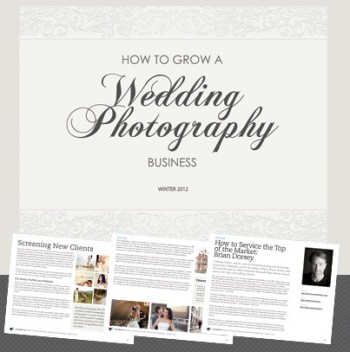 PhotoShelter, which provides portfolio websites and sales and marketing tools for photographers offers a range of free educational guides at its site. The latest is How to Grow a Wedding Photography Business, which offers tactics and strategies for brand building and marketing to and attracting new clients.
PhotoShelter, which provides portfolio websites and sales and marketing tools for photographers offers a range of free educational guides at its site. The latest is How to Grow a Wedding Photography Business, which offers tactics and strategies for brand building and marketing to and attracting new clients.
PhotoShelters e-book library of free downloadable guides includes:
- Photo Business Plan Workbook
- Selling Stock Photography
- Selling Fine Art Photography
- Crowdfunding Your Photography Project
- Marketing Yourself with Photo Books
- The Freelancer’s Online Marketing Blueprint
- The Photographer’s Guide to Selling Like a Pro
- Starting a Photography Business
- Facebook Fan Pages for Photographers
- Email Marketing for Photographers
- What Buyers Want from Photographers
- 2011 Inspiration Handbook
- 2011 How to Sell Prints
- 2010 SEO Cookbook for Photographers
- 2010 Photography Blog Handbook
- Google Analytics for Photographers
For more information about PhotoShelter, go to www.photoshelter.com.


 One brief, yet impactful piece I’ve come across during my 32 years in sales and sales management is entitled Make Up Your Mind. I’ve never been able to identify the author of this little gem, but following the simple advice it provides transformed me in several important and valuable ways.
One brief, yet impactful piece I’ve come across during my 32 years in sales and sales management is entitled Make Up Your Mind. I’ve never been able to identify the author of this little gem, but following the simple advice it provides transformed me in several important and valuable ways.

